Resources
A case for hardbacks
Optional extras for hardback book printing and binding
Sometimes, a little bit of extra effort goes a long way. Going that extra mile when designing your hardback book can help the finished product to look even better and create a book you can be truly proud of.
Hardback books are designed to last, and the finishing touches you choose play an important role in how they are received and remembered. From practical features like ribbon markers and head and tail bands, to decorative details such as foil blocking, cloth covers, or printed endpapers, each option contributes to the overall look and feel of the book. For special editions or presentation volumes, extras like dust jackets, belly bands, slipcases, or boxes provide an additional level of protection and distinction.
The right combination of these elements not only enhances the durability of your book but also reinforces its purpose, whether that’s to be read and handled regularly, treasured as a keepsake, or presented as a collector’s item.
At Page Bros, we bring together centuries of book printing expertise with modern production methods. We’ll work with you to identify the options that best suit your project and ensure the final result is both practical and beautifully finished. Here’s a simple guide to the optional extras available for your hardback book project.
a decorative detail
Head & tail bands
Head and tail bands are the small strips of coloured material, typically woven from coloured twine, you see at the very top and bottom of the spine. Originally, they were sewn in by hand to reinforce the binding and protect against wear. Today, while much of the binding process is mechanised, head and tail bands are still added for both strength and appearance.
They are available in a range of colours and styles and give the book a “finished” look, particularly when matched with cover, ribbon marker or endpaper colours.
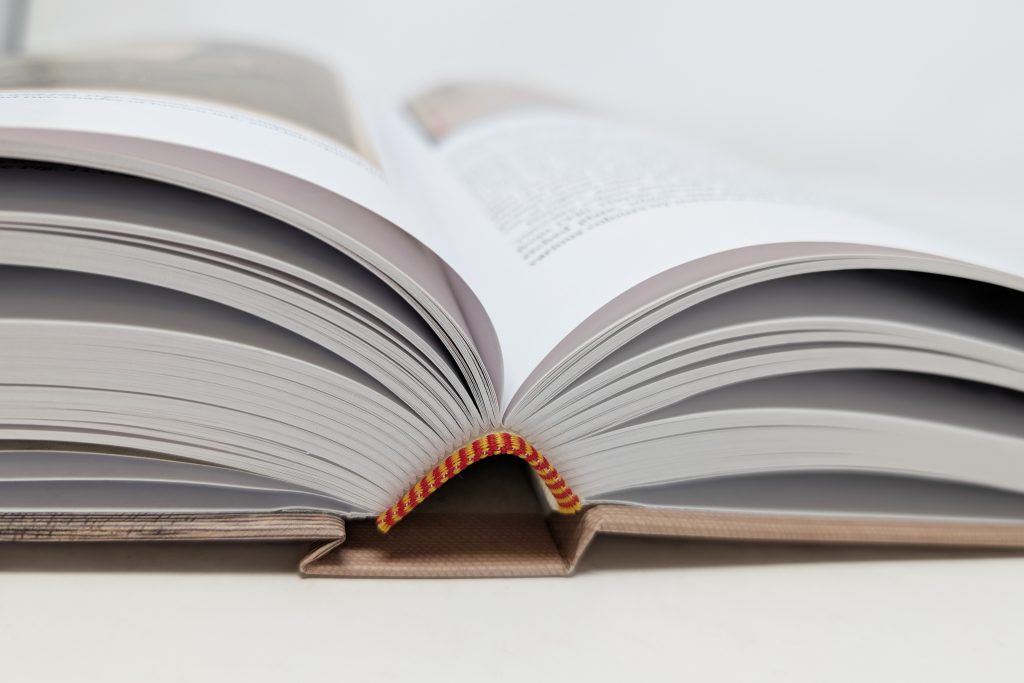

marking your place
Ribbon markers
Ribbon markers are one of the most practical extras available. A ribbon is fixed into the spine and lies between the pages, giving the reader a convenient way to mark their place. They are often used in Bibles, reference works, or annual reports, but can add value to almost any hardback.
They come in a wide range of colours, so it’s easy to coordinate with other design choices. Multiple ribbons can also be added if the book is likely to be used for study or cross-reference. The ribbon ends are heat sealed to keep the cut edge neat for long-term use.
setting the tone
Endpapers
Endpapers are the sheets that attach the cover boards to the book block, often heavier than the rest of the text paper and can be coloured paper or printed.
They are often the first pages a reader sees when opening the book. They offer scope for design creativity, setting the tone before the main content begins. Common examples include printed maps, timelines, patterns, or brand colours.
Because they are large and visible, printed or coloured endpapers help make the book feel complete and considered. We recommend a sturdier uncoated stock for endpapers and keeping fine detail away from the hinge for a clean, durable fold.
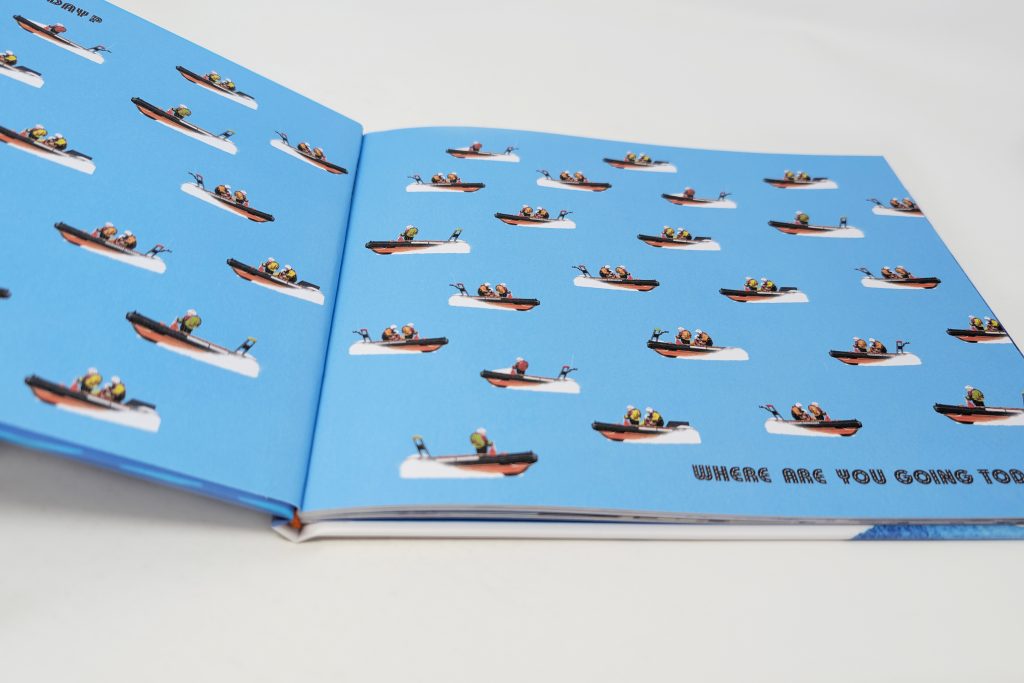
a finishing touch
Cover finishes
We often judge a book by its cover. A case not only protects the content, it also signals the value of what’s inside. Finishing choices can influence how a book is perceived, how well it withstands handling, and how effectively it reflects the publisher’s brand or the subject matter. From practical laminates to decorative foils and cloth, the right finish can transform a hardback into a book that feels as good as it reads.

added durability
Cover laminates
Lamination adds a protective layer to the printed case.
Options include gloss laminate, a bright, reflective film, ideal for covers with rich photography or bold colours. Matt laminate, smooth, understated, and popular for books with a more refined or subtle design. And soft-touch laminate, a specialist option with a velvety feel, often used for premium publications.
Besides improving durability, lamination also resist scuffs and moisture, extending the life of the cover.
Make it stand out
Special finishes
Special finishes are a great way to draw attention to particular details or introduce texture to a book cover.
One of the most popular options is Foil blocking, a process that adds metallic detail, often used for titles or logos, and is available in gold, silver, and a variety of colours.
Similarly, Spot UV applies a transparent glossy varnish to specific areas, adding contrast and highlighting titles, images, or branding.
To add depth embossing and debossing allows you to raise or sink parts of the design into the cover surface, creating a tactile effect.
Together, these techniques give your hardback a distinctive, premium look that can make it stand out on the shelf. See our full guide to special finishes.
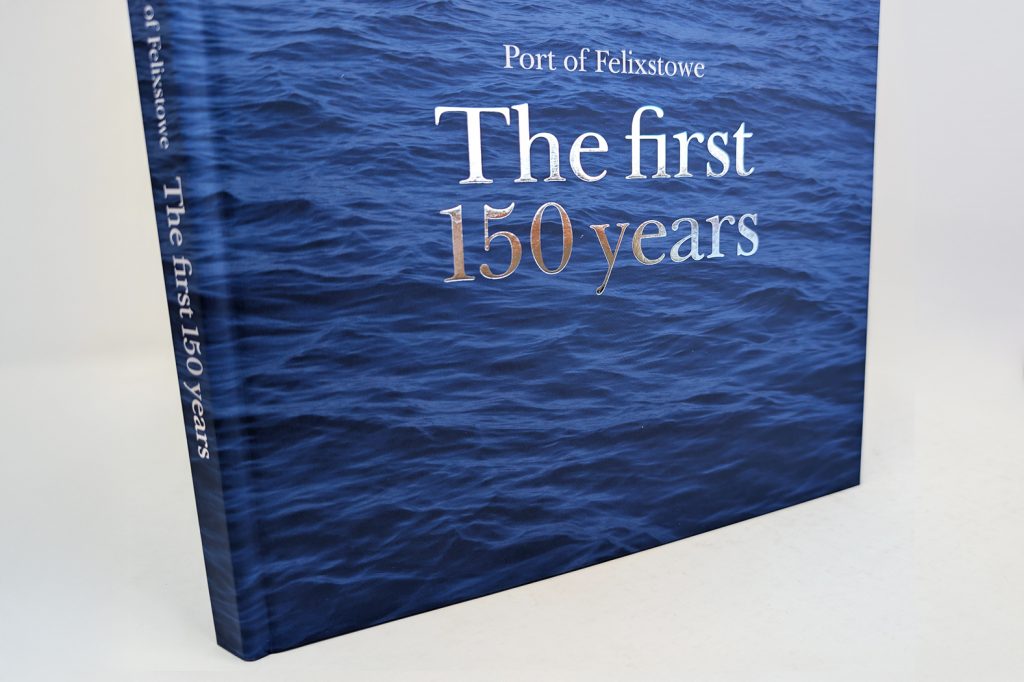
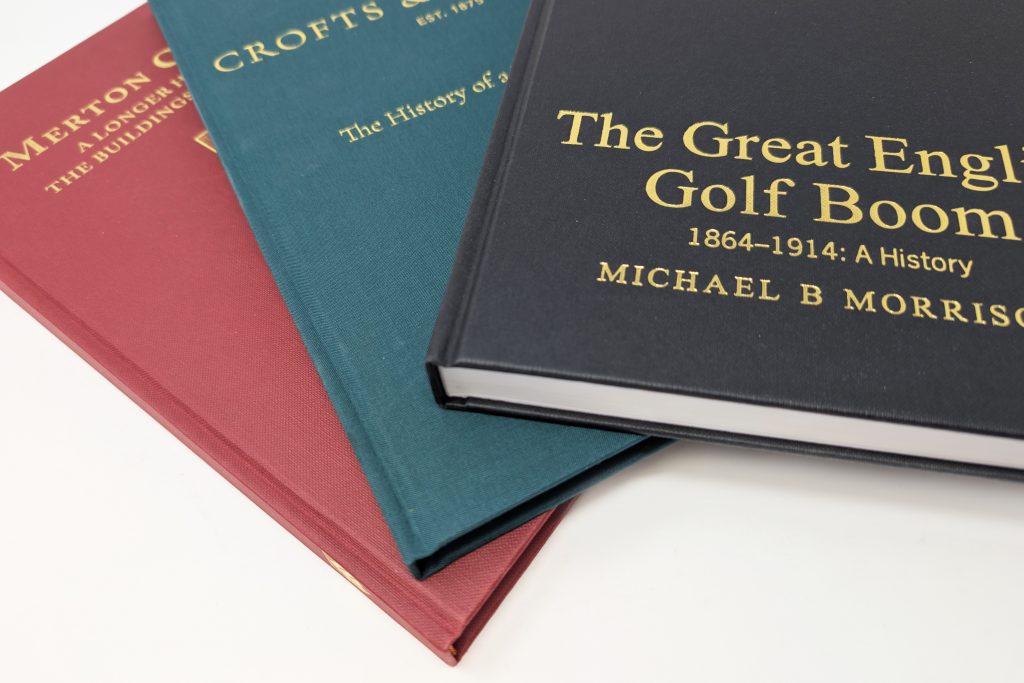
a timeless finish
Cloth covers
Cloth has been used for centuries to bind books, and it remains a popular choice for hardbacks. Woven materials such as linen or buckram create a tactile and traditional surface that feels durable and timeless. Cloth covers can be paired with foil stamping or blind debossing for titles and logos, allowing you to keep a classic look with understated detailing.
This option is particularly well suited to special editions or books intended to last for many years.
contrasting textures
Quarter binding
Quarter binding is where the spine (and sometimes the corners) of the case are covered in a different material to the rest of the boards. A common approach is to use cloth or leather on the spine for strength, with printed paper or another cloth across the front and back boards.
This technique dates back centuries and was originally used to reinforce the most vulnerable areas of the book. Today, it is chosen for its classic appearance and the scope it offers for contrasting textures and colours.
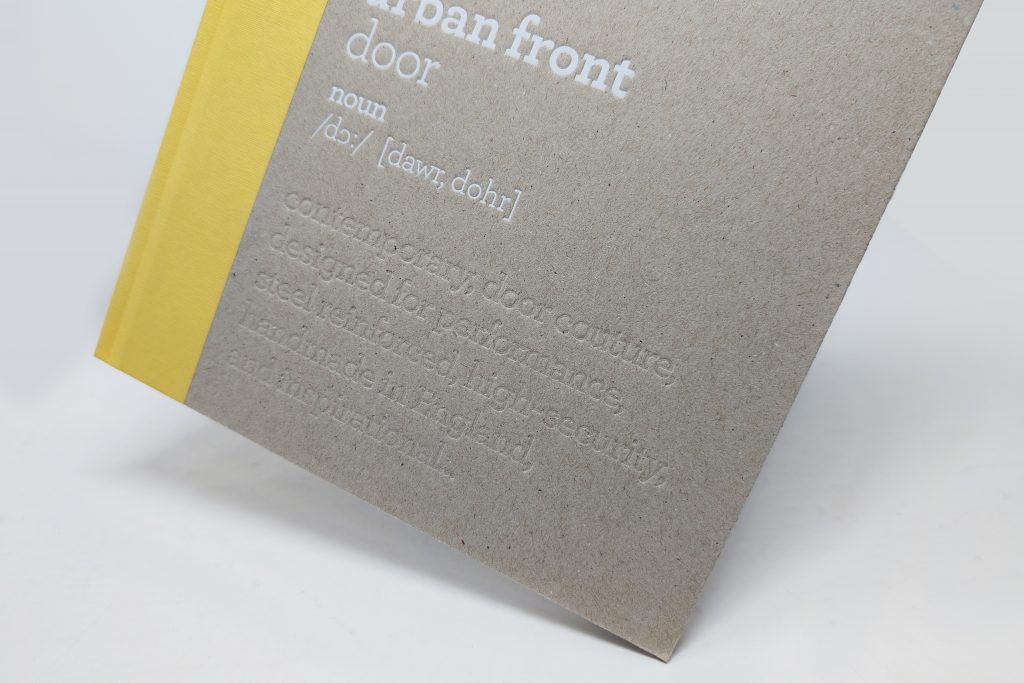
wrapped up
Book coverings
For books that need extra protection or a more distinctive presentation, there are a range of options to consider. Depending on the level of protection required and your budget, you can choose from dust jackets, belly bands, slipcases or boxes — each offering a way to enhance durability while giving your book a polished, professional finish that reflects its content and value.
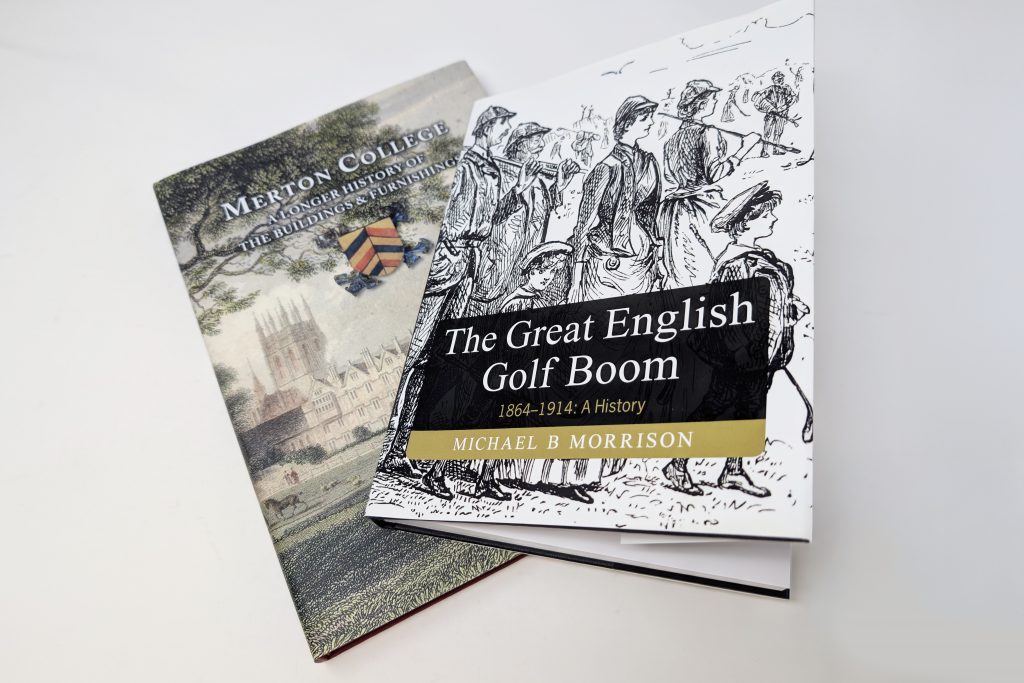
present & protect
Dustjackets & bellybands
Dust jackets and belly bands are both effective ways to enhance a book’s protection and presentation.
A dust jacket is a full-height covering with flaps, printed on paper and wrapped around the cover. It adds an extra layer of protection while providing additional space for design, with inside flaps often carrying blurbs, author biographies, or other supplementary information.
Belly bands, by contrast, are narrow printed strips wrapped around the middle of the book and sealed, with no flaps. They’re often used for promotional purposes, such as highlighting a new edition or an award, and can easily be removed after purchase.
Both options serve as versatile tools to elevate the appearance of a book and support marketing efforts.
for something special
Slipcases
Slipcases are open-ended sleeves made from board, often wrapped in paper or cloth to match the book. They provide hardback books with extra protection and help to enhance the look of the finished product. They also protect against dust and light while presenting the book smartly on a shelf.
Boxes are often used to house several books together, such as a series or collection. Options include thumb-cuts for easy extraction, internal linings and foil to the case. Heavier sets benefit from thicker board for rigidity.
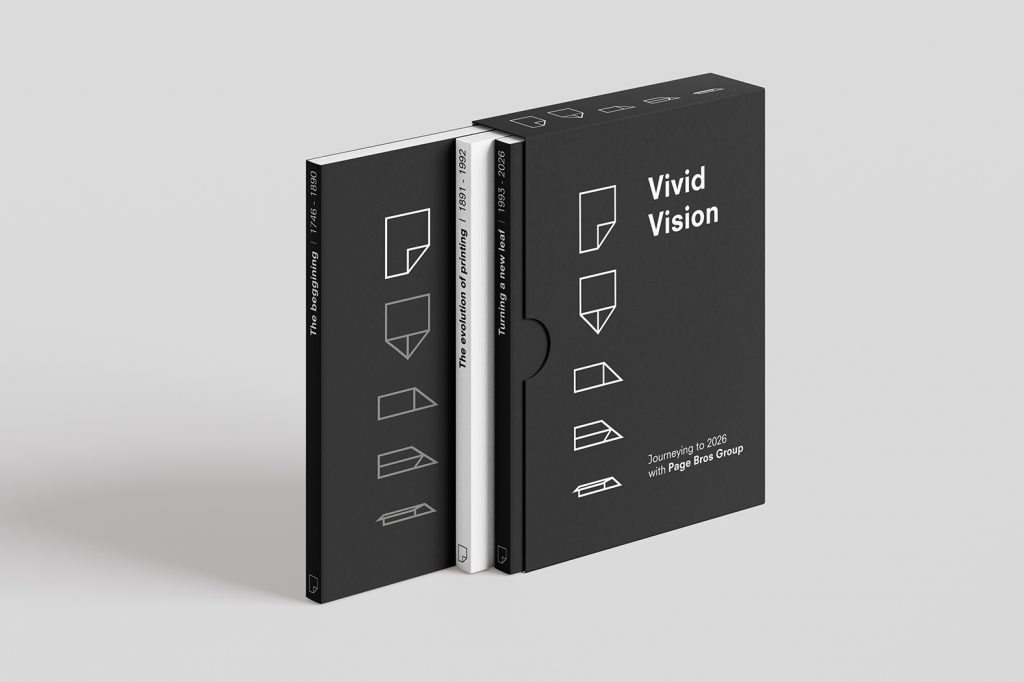
Happy to help
Optional extras allow a hardback book to be tailored to its purpose. Internal details like ribbon markers, printed endpapers, and head and tail bands enhance usability and finish. Cover treatments such as laminates, special finishes, and cloth create impact and durability. Protective options like dust jackets, slipcases, and boxes provide added distinction.
Each of these elements contributes to the character of the book. Together, they turn a hardback from a functional binding into a carefully finished object that is built to last.
At Page Bros, we combine centuries of bookmaking expertise with modern production methods. Our team can guide you through the options and ensure your book is produced to the highest standard.
If you are planning a hardback book and would like advice on the available extras, please get in touch.
Other resources
Our A–Z glossary of printing terms to better understand key industry jargon and processes.
Discover standard paper sizes at a glance to choose the right format for your print project.
Calculate your book spine width in seconds using our handy online Spine Width Calculator.
Download our quick guide to preparing print-ready files using Adobe InDesign.
Our cutter guide book includes over 100 capacity and non-capacity folder guides.
A practical guide to some of the most effective special finishing options.







